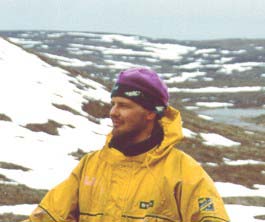Research Area
- Hyperspectra remote sensing applied to geological and vegetation studies. Development of algorithms that integrate both spatial and spectral domains for endmember extract and unmxing.
Research Interests
- Regional government geological mapping projects in the Canadian artic are time intensive and costly, primarily owing to poor accessibility. These mapping projects are essential for subsequent geological investigations and mineral exploration. Extensive budget cuts in geological surveys has resulted in the necessity to pursue effective reconnaissance mapping methods, specifically those involving remotely sensed hyperspectral data. Hyperspectral systems are becoming increasingly available for geological mapping, where cost savings, large aerial coverage, and relatively quick map production, make the data particularly attractive. These sensors collect spectral data over hundreds of contiguous channels with spectral resolution on the order of 10 - 20 nm, allowing the identification of specific spectral features associated with transition elements (e.g. Fe2+, Fe3+, Ni, Cr, Co), H20, CO3, OH, Al-OH, Fe-OH, and Mg-OH commonly found in rock forming minerals. The discrimination of lithological units using airborne and satellite hyperspectral imagery primarily makes use of the spectral domain, ignoring the characteristic spatial continuity of lithological units. The integration of spatial and spectral information for lithological identification and mapping has yet to be fully explored, and as such, represents a key research avenue in geological hyperspectral analysis.
|
 |

